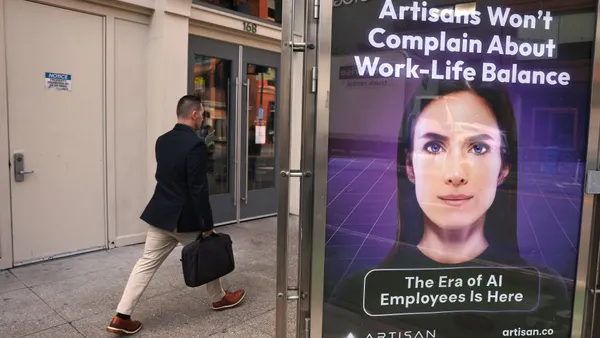Dive Brief:
- Most organizations in a survey by nonprofit professional association WorldatWork are addressing gender pay inequity as a standard practice but many also are expanding their assessments.
- According to WorldatWork, 71% of respondents expanded a pay inequity analysis to broader areas that may contribute to unintended inequities, "such as workforce representation, benefits programming and culture." Taken together with WorldatWork's previous research, they survey revealed that many employers "are working to address issues linked to the concerns around any personal attribute being used in any process that ultimately impacts salary, including hiring, promotion, and feedback systems," Scott Cawood, the organization's president and CEO, said in a statement.
- Performance management processes, for example, can be quite subjective, Cawood said. "In the future, performance management programs will have to adhere to updated frameworks in order to be bias-free. We know, anecdotally, that organizations that do look at performance management in the pay equity context are experimenting with removing many pay practices to prevent or reduce bias."
Dive Insight:
Employers can be proactive in addressing potential pay disparities by adopting transparent pay policies that take into account an organization's established philosophy around compensation. That may include sharing elements like pay ranges for certain positions, experts previously told HR Dive.
A WorldatWork/Korn Ferry survey released in May found that most employers (60%) were actively working on achieving pay equity, while 7% had no plans to do so. at all. Among the employers that had identified pay gaps, 23% were considering remediation strategies, but a slightly higher number (28%) had not taken any action to begin addressing the issue. Moreover, the survey concluded that pay inequity wasn't confined to gender alone: some employers polled were aware that pay inequality affects race, age, ethnicity and other employee groups.
Employers looking to be proactive in confronting pay gaps have several recent examples to look to. Nordstrom announced in August that it had closed gender- and race-based pay gaps within its organization after assessing employees in similar roles with similar levels of experience and performance. The chain was preceded by Salesforce, which shelled out $6 million to close a gender-based pay gap back in 2017, and JPMorgan Chase, which agreed to bring compensation for nonwhite and female employees in line with overall wages following pressure from shareholders.
HR professionals can take the lead in correcting pay disparities by working with managers, reviewing pay raise decisions, conducting periodic audits of their companies' pay practices and using compensation reports to help set internal pay rates and flag and address discrepancies. But as Cawood noted, such efforts may soon be considered the bare minimum. As employers increasingly see inequities in benefits offerings and performance review processes, HR may need to dig deeper.













